|
The rose city Petra is the most important tourist attraction in Jordan and has been voted one of the seven wonders of the ancient world. A visit there explains why. In its most important period, it was a center for commerce with trade routes in all directions. The Nabeatean people carved tombs from sandstone. They were experts at collecting and controlling water from the flash floods that happen in the area.
It isn't practical to give much history here. If you are interested, these links might be helpful:
Are you ready to join us for a tour? Please wear comfortable shoes because we are apt to walk 3 to 5 miles to make the round trip. If that is too far for you, you can get horseback or horse cart rides into Petra and then have donkey rides while you are in the main part of Petra. We will first have to walk to the Siq (the shaft), the mile long path through a crack in the rock, that leads to Petra. Actually it is slightly downhill as we enter so a leisurely walk should not be too taxing for most you. (Coming back could be slightly more of a challenge.) |
The ![]() symbol
beside some selected pictures indicates a larger image is available by clicking the symbol.
symbol
beside some selected pictures indicates a larger image is available by clicking the symbol.
When we begin our hike at the parking lot, we first see the places where horse and carts are kept. Then we will go past many caves, tombs, and other rock carvings.
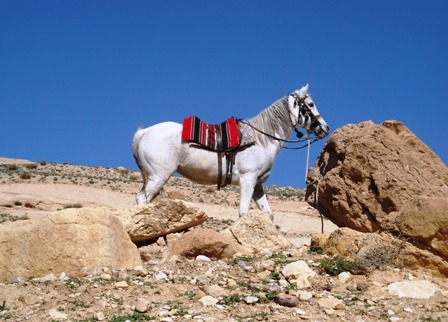
|

Left: Danielle saw this horse waiting in the area where the horses were kept. Above: The path to the Siq. Below left and below: Some some of the rock carvings we see near the beginning of the hike. |
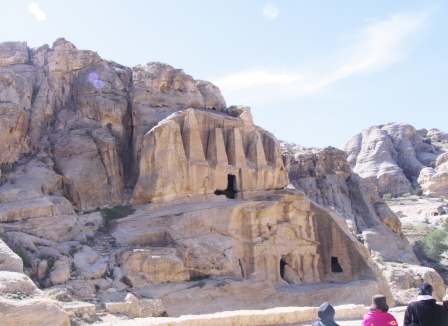
|

|
The Siq is just a long crack in the sandstone that was used as the entrance to Petra.
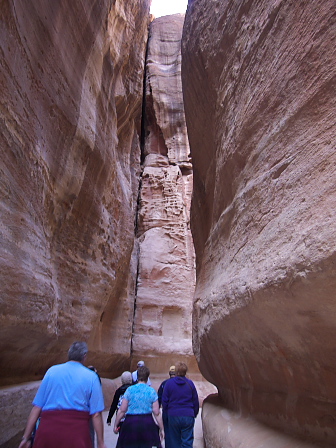
|

After entering the Siq, we observe that some places are quite narrow while other sections are very wide. |

|

Along the way we observe numerous carvings in the wall. Some appear to be niches with bases for statues of their gods. |
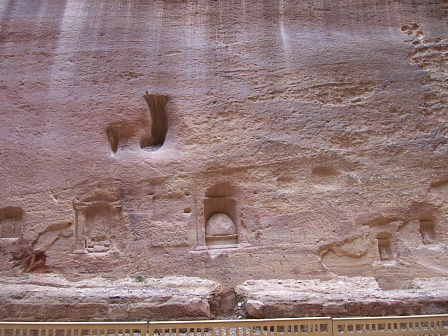
The stone carving on the right is the badly eroded remains of a camel and its driver. It is easy to see the bottom half of the driver on the right. The camels feet are the mounds at the base and we can make out part of the camels body above them. |

|
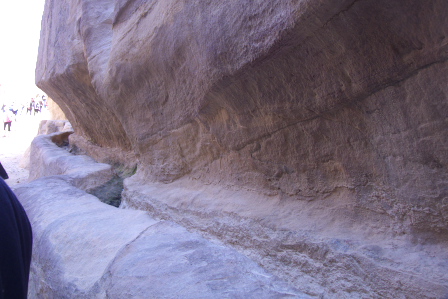
|

Right: Along the entire length of the Siq there is an aqueduct running along the wall. Because the trail is slightly downhill, water could run down the aqueduct to the main city. Above: There are occasional crevices to the outside. This one contains a dam to control the water from the flash floods. |
It got its name because people used to think it held treasures. But in reality, it was just a grand tomb.
| Near right: The first sight of the Treasury as we come close to the end of the Siq. Far right: The view of Treasury when we are almost at the end of the Siq. |
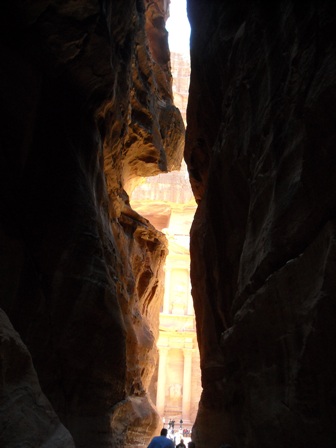
|

|

|
We finally get a full unobstructed view of the Treasury. Because of damage over the years, part of it had to be reconstructed. |
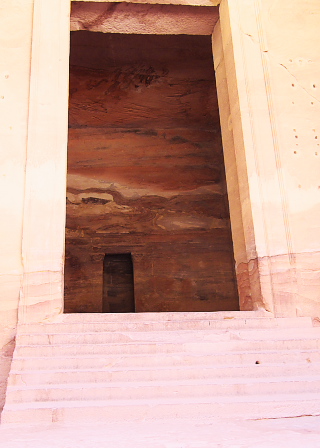
|

Left: When we move close to the Treasury, we can see the room inside the front entrance. Above: We also notice that recent excavations have discovered rooms below the front steps of the Treasury. |
There is only a limited area left of the Treasury but there is more to see on the right.
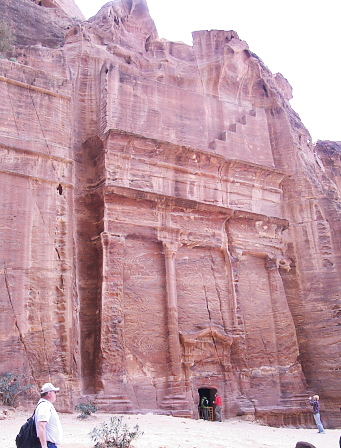
|
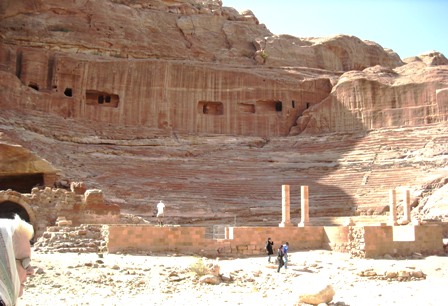
Left: The Treasury is not the only ornate structure in Petra. We would be impressed by this structure if we had not already seen more elaborate ones already. Above: We stop to marvel at the theater. While it is commonly assumed that the theater was built by the Romans, many believe that it was constructed by the Nabataen people before Romans entered Petra. There is some disagreement about the caves in the back of the theater. Some believe they were the remains of tombs that were dismantled to build the theater. Other believe they were box seats. |

Above: These are but a few of the rooms in the rock we see carved in the sandstone.. Notice the colors in the rock Right: We see this man sitting outside a tomb playing an ancient instrument. . |
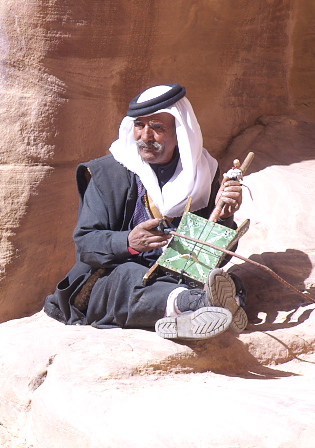
|
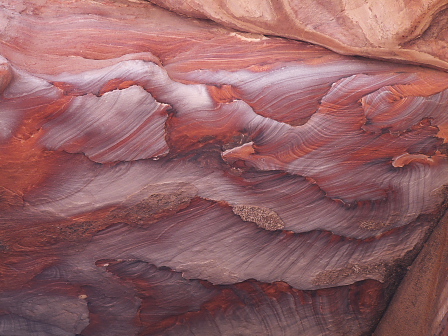
Petra is known as the rose city. So we are surprised by the impressive colors we see in some of the rock. |
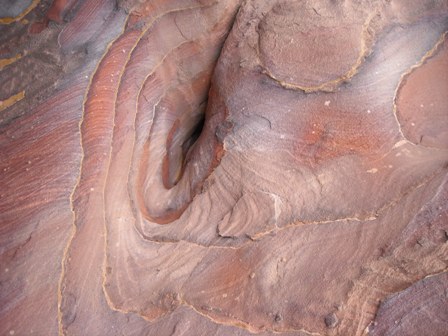
|

|

We continue to marvel as we pass by more rooms and tombs. Erosion has helped shape the pillars we see captured in the above picture. |

|
Scene along the path |
Most of the tombs are closed to visitors but we get to go in one.

Inside the tomb we find cavities in the floor that held bodies. Some are full length, some were shorter for children. |

One the wall of the tomb, we see some markings that are shaped like "A"s or upside down "V"s. The colors of this picture have been enhanced to help show the markings. |
Return to the main page Recommended
Previous Next
Copyright 2010 James and Danielle Brink. Permission is given for non-commercial use.
Last revision: 4/2/2010